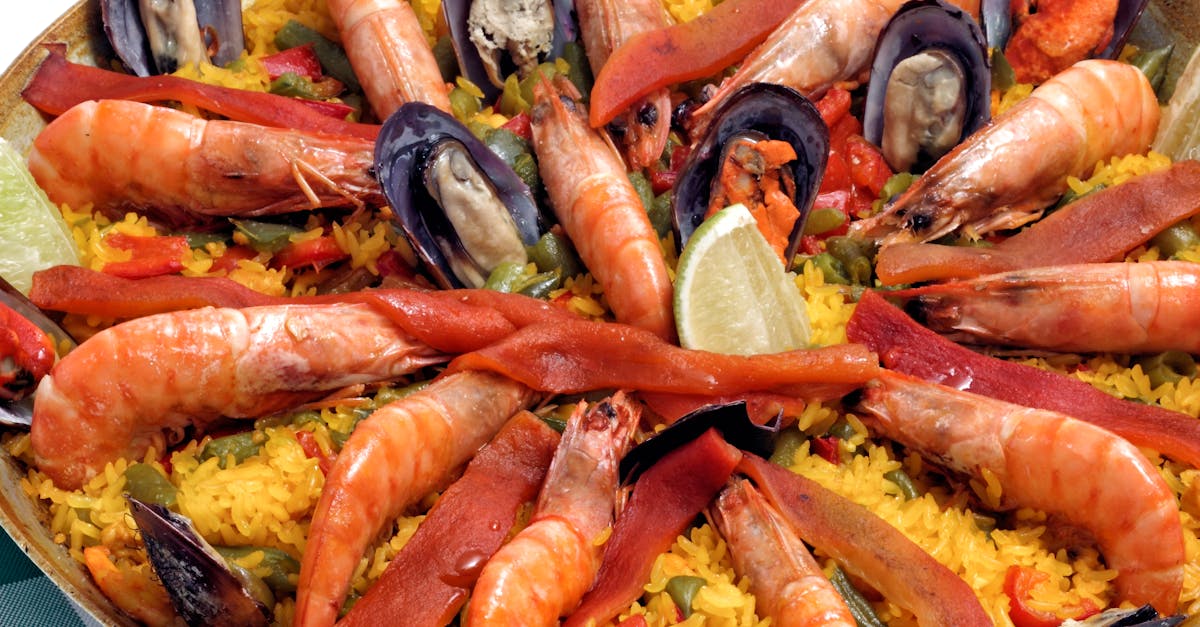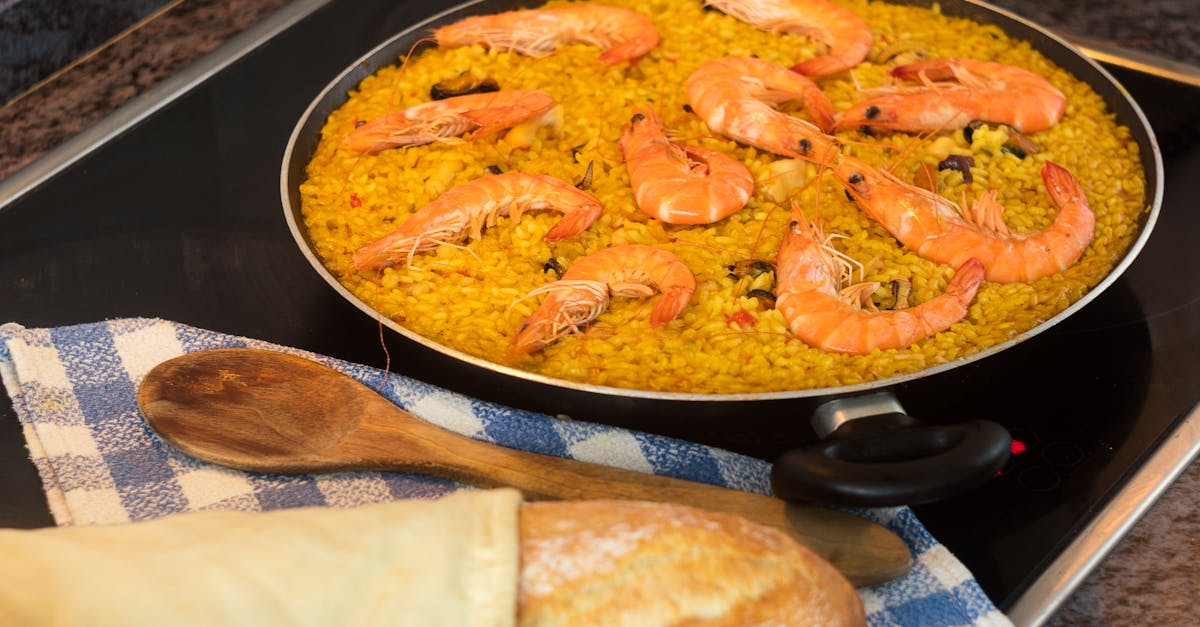Traditional Paella Ingredient Variations
October 30, 2024

Not only is paella a beloved Spanish dish known for its delicious flavor and vibrant colors, but it also offers a myriad of ingredient variations that make each preparation unique. When it comes to traditional paella, the mix of ingredients used can vary depending on the region of Spain and the cook's preferences. In the first place, the core ingredients of paella typically include short-grain rice, saffron, and olive oil. However, the beauty of this dish lies in its flexibility, allowing for a wide range of additional components that contribute to its complexity and richness.
Saffron, the pricey spice that gives paella its signature yellow hue, is an essential ingredient in most traditional recipes. The aromatic saffron threads are often toasted before being steeped in warm broth, enhancing their flavor and color. Additionally, in coastal regions, it is common to find seafood paellas where ingredients like shrimp, clams, mussels, and squid take center stage. Conversely, in the interior regions of Spain, rabbit, chicken, and snails are more prevalent in paella recipes.
Moreover, the choice of vegetables in paella is another factor that adds depth to the dish. Peas, bell peppers, artichokes, and tomatoes are commonly used to provide contrasting textures and fresh flavors. What's more, some cooks incorporate beans such as lima or butter beans to add creaminess and extra protein to the rice. The combination of vegetables with the other ingredients creates a harmonious blend of tastes that elevate the dish to new heights.
Paella is a dish with a storied history and cultural significance, making it a staple in Spanish cuisine. While the traditional ingredients form the foundation of this iconic dish, the variations in ingredients showcase the adaptability and creativity that characterize the culinary world. Each ingredient brings its unique flavor profile, contributing to the symphony of tastes that make paella a beloved and versatile dish around the globe.
Following this exploration of traditional paella ingredients, it is evident that the variations in components greatly contribute to the dish's versatility and appeal. The regional differences in ingredient choices not only reflect Spain's diverse landscape but also showcase the culinary creativity found throughout the country's gastronomic heritage.
In particular, the way in which various regions incorporate their local produce and protein sources into the paella highlights the importance of fresh, seasonal ingredients in Spanish cooking. This emphasis on utilizing what is readily available adds a layer of authenticity and depth to the dish, making each preparation a true representation of the area from which it hails.
Moreover, the practice of cooking paella is steeped in tradition and familial connections. It is often a communal dish prepared during gatherings and celebrations, symbolizing unity and shared experiences. The act of cooking paella together, whether with family or friends, creates lasting memories and strengthens bonds, emphasizing the social aspect of enjoying a meal together.
Additionally, the process of making paella is as important as the ingredients themselves. The careful layering of flavors, the gradual absorption of broth into the rice, and the expert timing required to achieve the perfect socarrat (the caramelized crust at the bottom of the pan) all contribute to the dish's allure. The craftsmanship and attention to detail involved in preparing paella make it not just a meal, but an experience that is savored and remembered.
In reality, paella is more than just a dish; it is a cultural symbol that embodies the spirit of Spain and its people. Its ingredient variations and rich history make it a culinary treasure that continues to captivate palates around the world.

Exploring Diverse Components in Authentic Paella Recipes
Afterward, each time a paella is prepared, it tells a unique story of the region, the season, and the cook behind it. The versatile nature of paella allows for personal touches, adaptations, and creativity, transforming it into a dish that resonates with both tradition and innovation.
The evolution of paella over the years showcases how a dish deeply rooted in history continues to adapt to modern palates while honoring its origins. Chefs around the world have put their own twist on this iconic Spanish dish, introducing new ingredients and flavor combinations that push the boundaries of traditional recipes.
In like manner, the popularity of paella has transcended borders, becoming a symbol of Spanish culinary prowess globally. Whether enjoyed at a high-end restaurant, a family gathering, or a beachside fiesta, paella has the power to bring people together through its vibrant colors and rich tastes.
Certainly, the journey through the diverse components of authentic paella recipes is a testament to the culinary artistry and cultural significance of this beloved dish. With each variation, whether it be a seafood medley from the coast or a hearty meat mix from the inland plains, paella continues to enchant food enthusiasts worldwide.
Altogether, the beauty of paella lies not only in its delicious taste but also in the sense of community and tradition it embodies. As paella continues to evolve and inspire new generations of cooks, its legacy remains deeply ingrained in Spanish culture, representing the heart and soul of a nation through a single, iconic dish.
Considering the vast array of ingredients and regional influences encompassing authentic paella recipes, it is clear that this iconic Spanish dish represents not only a delicious culinary tradition but also a profound cultural heritage. The evolution and adaptability of paella over time showcase its ability to captivate global audiences while remaining true to its roots. As chefs worldwide continue to innovate and put their spin on this beloved dish, the essence of paella as a communal, celebratory meal remains at its core.
Ultimately, the exploration of the diverse components found in authentic paella recipes unveils a tapestry of flavors, textures, and histories woven together in a single pan. From the rich saffron-infused rice to the varying proteins and vegetables that grace the dish, each ingredient tells a story of Spain's land and seas. The social significance of paella, as a dish that brings people together and fosters connections, highlights its enduring appeal beyond the realm of gastronomy.
In essence, paella transcends being just a meal; it embodies a shared experience, a cultural symbol deeply ingrained in the fabric of Spanish tradition. As it continues to evolve and inspire generations of cooks, paella stands as a testament to the art of blending heritage with innovation on a plate. This dish, with its tantalizing colors, robust flavors, and communal nature, will undoubtedly hold its place not just on dining tables but in hearts around the world, uniting individuals through the universal language of food.

Title
I'm a paragraph. Click here to add your own text and edit me. It's easy.

Title
I'm a paragraph. Click here to add your own text and edit me. It's easy.

Title
I'm a paragraph. Click here to add your own text and edit me. It's easy.